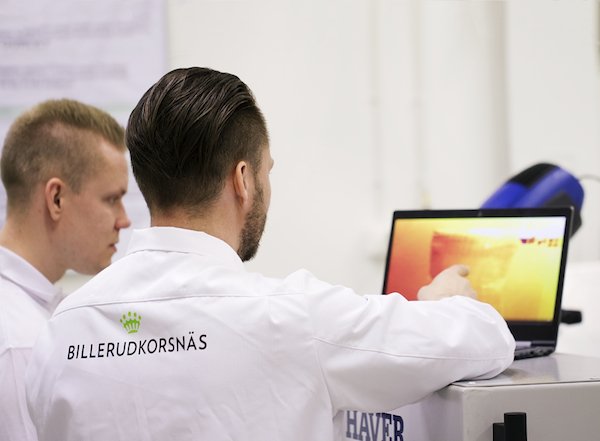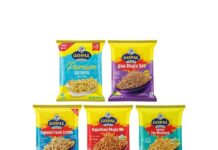Last year BillerudKorsnäs and Haver & Boecker published a total of nine sack packaging norms. These norms cover the basics and some of the most critical factors relevant to pack powdered goods. The reactions in the market show that the norms support the work of bulk goods manufacturers. They provide a helpful guideline for determining the optimal packaging process and the perfect sack packaging for products to be filled.
BillerudKorsnäs and Haver & Boecker have decided to develop further norms after receiving positive feedback worldwide jointly. The sack packaging norms contain recommendations for creating and using packaging solutions and processes and defining basic standard know-how or standard procedures. They provide orientation for questions that manufacturers of bulk materials confront daily.
The cost of empty sacks
Both companies have experienced that customers are increasingly paying attention to the cost of empty sacks. The right quality and design of the empty sacks are crucial, as they directly determine the performance at all steps in the value chain. For example, a particular sack design may be cheaper, but it costs millions in lost production if it fills slower on the filling machine.

Bulk goods manufacturers have a direct influence on all factors through the design of the packaging process. Here, the Sack Packaging Norms indicate how bulk solids manufacturers can ideally act in this area of conflict between cost and quality. “Together, BillerudKorsnäs and Haver & Boecker now offer a set of recommendations to minimize problems and maximize performance in the packaging chain. If manufacturers and users of paper sack packaging follow the recommendations and guidelines and implement the usage of these norms in their supply chain, efficient and effective packaging production, filling, handling, storage, and transport of the end products will be ensured,” says Mikael Peterson, Technical Service director at BillerudKorsnäs.

Expert knowledge from both companies is within the sack packaging norms. BillerudKorsnäs contributes with years of expertise in packaging paper production, practical experience, and analytical tests, design, and developments at the BillerudKorsnäs Packaging Development Centre. Haver & Boecker contributes with its extensive experience in filling technology and handling powdered bulk materials. “In the Haver Institute, we run more than 300 packaging trials per year together with customers. Many meetings and discussions with our customers and converters show us again and again that people are looking for such guidelines to perfect packaging. The information presented within these norms are collected throughout years of experience, and we are pleased to see they will be used worldwide,” explains Thomas Hilling, manager Haver&Boecker Institute.
The current norms of BillerudKorsnäs at a glance:
• A-1.1 Sack Permeability
• A-2.1 Shelf Life
• A-3.1 Sack Moisture – Curing of paper sacks
• A-4.1 Specifying Sack Strength
• A-5.1 Balancing Sack Strength and Deaeration
• A-6.1 Describing a valve sack
• B-1.1 Filling Degree
• B-2.1 Valve Sealing
• B-3.1 Filling Equipment
The already published Sack Packaging Norms are available for free download at –https://www.billerudkorsnas.com/spn. Registered interested parties will receive all further norms automatically by eMail. Proposals for new norms can also be submitted on the website.
IndiFoodBev — authentic, impactful and influential
An English-language food and beverage processing and packaging industry B2B platform in print and web, IndiFoodBev is in its third year of publication. It is said that the Indian food and beverage industries represent approximately US$ 900 billion in revenues which implies more than 20% of the country’s GDP. Eliminating the wastage on the farmside can help to deliver more protein to a higher number of the population apart from generating sizable exports. The savings in soil, seeds, water, fertilizer, energy and ultimately food and nutrition could be the most immense contribution that country is poised to make to the moderation of climate change.
To improve your marketing and grow sales to the food and beverage processing and packaging industry, talk to us. Our research and consulting company IppStar [www.ippstar.org] can assess your potential and addressable markets in light of the competition. We can discuss marketing, communication, and sales strategies for market entry and growth.
Suppliers and service providers with a strategy and budget for targeted marketing can discuss using our hybrid print, web, video, and social media channels to create brand recognition linked to market relevance. Our technical writers are ready to meet you and your customers for content.
The second largest producer of fruit and vegetables in the world is continuously expanding processing capacities and delivery systems with appropriate innovative technologies. We cover product and consumer trends, nutrition, processing, research, equipment and packaging from farm to thali. Get our 2025 media kit and recalibrate your role in this dynamic market. Enhance your visibility and relevance to existing markets and turn potential customers into conversations. Ask for a sample copy of our bi-monthly in print or our weekly IndiFoodBev eZine each Wednesday.
For editorial info@ippgroup.in — for advertisement ads1@ippgroup.in and for subscriptions subscription@ippgroup.in
Naresh Khanna – 10 February 2025
Subscribe Now











